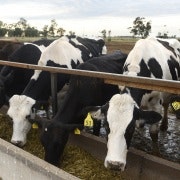BHP's model theory
The most impressive aspect of this week's BHP Billiton result was its ability to generate cash in the midst of the meltdown in commodity prices. The financial crisis and the stress and distress it caused in the resources sector inadvertently proved a theory developed by former chief executive Chip Goodyear about seven years ago.
During his term as chief financial officer, Goodyear and his team developed a proprietary model, Cash Flow @ Risk, to analyse and test the vulnerability of BHP's portfolio of resource assets. Under-pinning the model was basic portfolio theory – diversification lowers risk and volatility and enhances returns.
The aim of the modelling, still being used and refined by current CFO Alex Vanselow, is not to use it to drive strategy but rather as a tool for understanding and managing risks.
The early modelling signalled the strength provided by BHP's diversity after the merger with Billiton. Its disparate portfolio of reasonably evenly-balanced bulk and exchange-traded commodities and its unusual exposure to petroleum, which has a low correlation with the rest of the portfolio, suggested than even in a worst case scenario there was a base level of cash flow BHP could rely on.
An element of Goodyear's decision to acquire WMC early in his term as CEO was the fact that its portfolio added to the diversity within BHP and pushed that theoretical base level of cash flow up.
BHP has confronted the worst-case scenario of the worst financial crisis since the 1930s and a synchronised global recession that has sent commodity prices, and for a time, oil prices, tumbling. It generated record operating cash flow of $US18.86 billion!
Some of that was attributable to very solid financial management – working capital more than doubled from $US5.2 billion to $US10.65 billion – but some of it also related to the diversity within the portfolio. While the contributions from aluminium, base metals and stainless steel materials plunged, and petroleum fell 25 per cent, iron ore (up 35 per cent) and metallurgical coal (up 403 per cent) soared.
That's not a coincidence. Those are the two big bulk commodities that BHP sells under contract, so it was still receiving prices that reflected the commodities boom even after that boom had ended and demand and prices for exchange-traded commodities had imploded. Or at least it was until the Chinese started refusing to honour the contracts and accept shipments.
That development would have strengthened BHP's commitment to shifting iron ore from a market where the price is set through annual and unpleasant negotiation to one where it is established by reference to the spot market or market-related indices. It is used to managing market risks; the performance risk in iron ore wasn't exposed until the crisis, and China's response to it, turned the contracts into one of those ''heads I win, tails you lose'' deals.
The impasse between the Chinese mills and the producers – no benchmark pricing deal has been settled or looks like being settled for this year and, with the spot market price now considerably higher than the price demanded by the Chinese, no incentive for the producers to do a deal – makes it more likely that the move towards market-related pricing will gain momentum. The arrest of Rio Tinto's marketing team in China will also help that process.
If iron ore pricing moves that sector towards something analogous to exchange-traded commodities, it will mean greater volatility within the BHP portfolio because iron ore prices will move more closely with other metals in the BHP portfolio. The Pilbara joint venture with Rio, which will give BHP increased production from the Pilbara at a cost of a $US5.8 billion equalisation payment to Rio, will exacerbate the impact of that change to the nature of the portfolio.
Apparently the increase in potential volatility isn't dramatic, indeed it is said to be quite modest. It could, however, be countered by expanding other parts of the portfolio with lower correlations to exchange-traded metals.
BHP's petroleum interests could be expanded significantly without pushing the model out of shape – indeed a larger exposure to petroleum would reduce the amounts of cash flow at risk from any event or combination of events. Similarly, potash has a low correlation with the rest of the portfolio, which might be one reason why Marius Kloppers referred to it enthusiastically at the earnings briefings.
BHP no longer has to rely on theory to support the case for a diversified and balanced portfolio. Its own experience and the contrast with Rio, which created a highly-leveraged over-exposure to aluminium when it acquired Alcan with borrowed funds, have demonstrated its value.
While it isn't obsessed by the model, one assumes that it will remain very wary of creating any significant tilts in the portfolio for any length of time and will be keen to re-balance the portfolio through acquisitions and new projects if a tilt towards commodities with high-correlations in terms of either demand or pricing does develop.
With minimal gearing and $US11 billion of cash in an environment where the rest of the sector is under significant pressure, it has the firepower and the opportunity to do a lot of fine-tuning if it decides to optimise the portfolio using the Cash Flow @ Risk approach.















